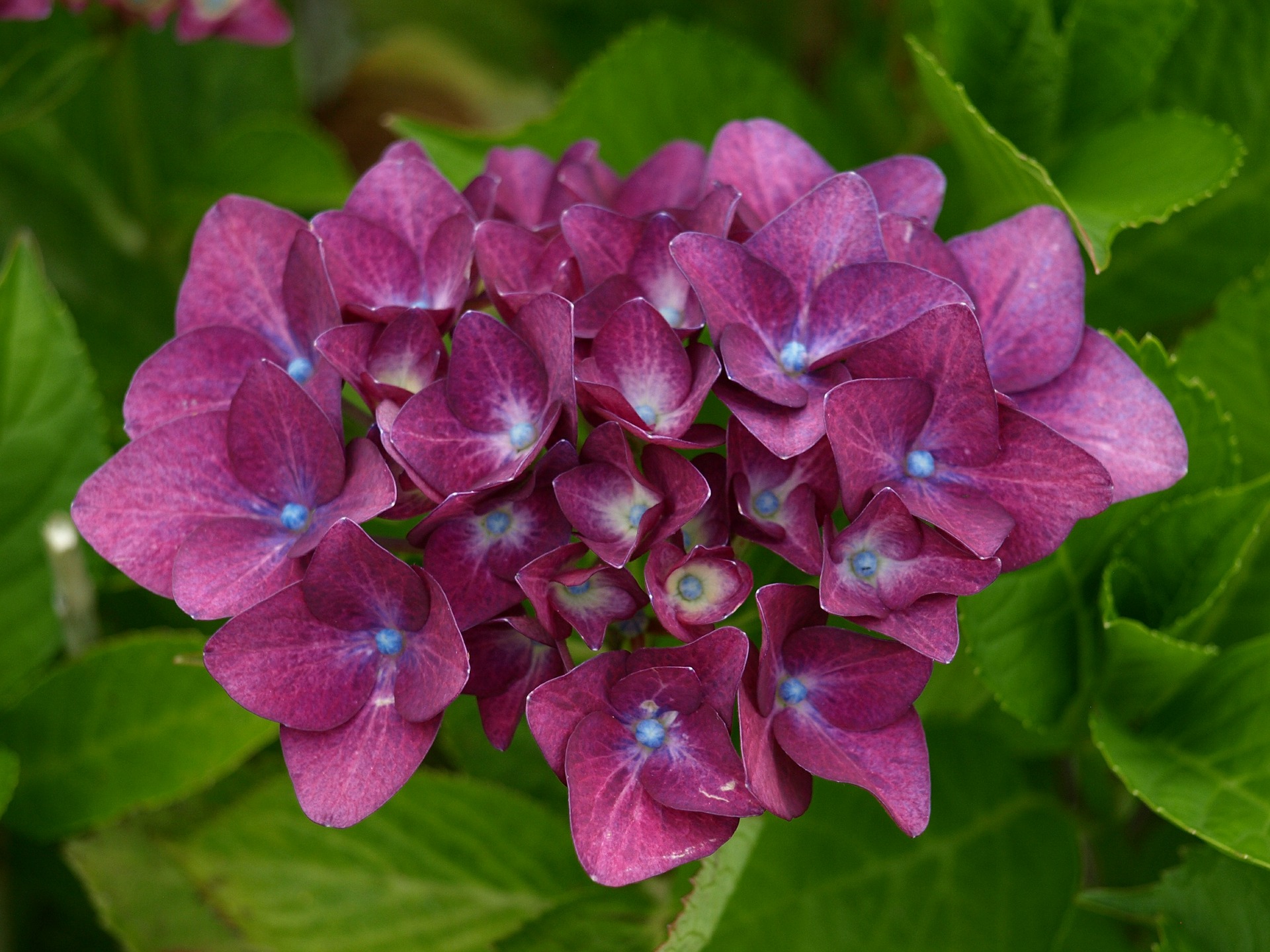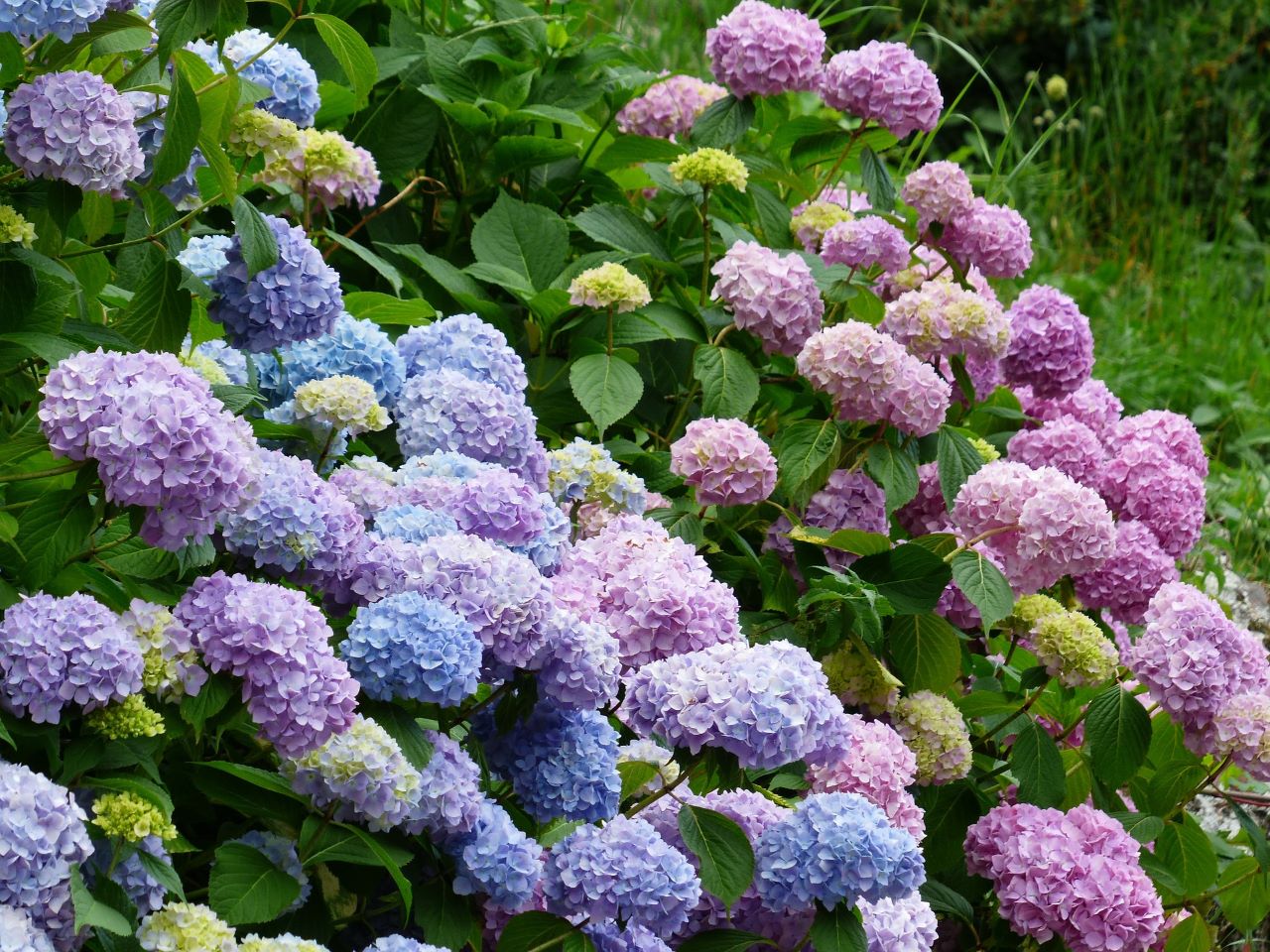Hydrangeas 101
Large blooming, beautiful and colorful hydrangeas are a great additions to any landscape. Their bold colors make them perfect for freshly cut or dried flowers. Getting off to the right start in the right location is the difference between a hydrangea bush that blooms for years and one that never does.
Get the beautiful blooms you desire with these hydrangea planting tips.

Where should I plant my hydrangea? Choose a spot with moist, well-drained soil. Hydrangeas can grow from 4’ to 12’ in height depending on the variety, so plan accordingly. Most hydrangeas benefit from some shade, especially in hot climates. Too much shade means your hydrangea may not grow flowers.
Check the plant tag to find out how many hours of sun your hydrangea should be getting per day. Panicle hydrangeas tolerate more sun than do other species. And if you live in a region where it gets seriously hot, your hydrangea will need more shade than those grown in colder zones. Hydrangeas in southern climates especially need frequent watering to tolerate that stress.
If you’ve noticed your hydrangea has stopped blooming in recent years, it may be time to evaluate the location. Make sure hydrangeas are still receiving enough daily light and check the growth of nearby trees. Consider moving the hydrangea to a sunnier spot.

Get Ready to Plant. Once you’ve found the a spot, dig a hole twice as large as the hydrangea’s container. Mix in an organic starter plant food, such as Bio-tone Starter Plus, to keep roots strong. Add 1” of compost or Espoma Organic All-purpose Garden Soil to help with nutrients and drainage. Place the hydrangea in the hole at about the same height it was in the container, spreading its roots wide. Backfill the hole with soil and top with 2-3” of mulch.
Water Well. After you plant, water the hydrangea until a puddle forms. Water TWICE a week for a month. Then water deeply once a week until fall.
The Finishing Touch. Feed blue hydrangeas with Holly-tone to keep the soil acidic. Otherwise, opt for Flower-tone. For the best hydrangea care, feed 2-3 times throughout the growing season, which is spring until fall.
How to Grow a Hydrangea Tree
Flowering hydrangeas are a telltale sign of summer. Nothing beats the beautiful sight of blooming hydrangeas in a variety of colors. The white, blue, pink or purple flowers paired with bright green foliage look gorgeous in every summer garden.
While we’re typically used to seeing low growing hydrangea bushes, how great would it be to see hydrangeas on trees? Well, the good news is, you can! Here is how you can grow a hydrangea tree.
Choosing the One
Hydrangea paniculata, also known as Grandiflora, produces white conical flowers instead of big spherical blossoms. With some pruning and proper care, it can grow up to 25 feet tall! Grandiflora, known among gardeners as Pee Gee Hydrangea, is your best bet for growing a hydrangea tree.
Planting
Before you plant, set yourself up for success. Check your hardiness zone, as hydrangea trees thrive in USDA plant hardiness zones 5 through 8a. Hydrangeas prefer full sun for most of the day and a bit of afternoon shade, so be sure to choose a generally bright spot.
Hydrangeas typically thrive in rich, porous, moist soil. Add Espoma’s Bio-tone Starter Plus to ensure healthy growth. Water thoroughly and if planting multiple trees, be sure to space each hydrangea at least 3 to 10 feet apart.
Pruning
One of the most important parts of growing a hydrangea tree is pruning. The main difference between a hydrangea shrub and a tree is training, pruning and proper care. The ideal time to prune is early spring. Remove old twigs that didn’t produce healthy growths and remove suckers from the trunk of the tree. Keep your tree neat by cutting branches short enough that they each have only two or three nodes (small bumps on the branch that signify growth).
Upkeep
Your hydrangea tree will need a lot of sun, but provide some shade on especially hot summer afternoons. More sun means more water, so keep the soil moist to avoid wilting leaves and blooms. Prune your hydrangea tree in the spring before peak growing season. Enrich the soil with Espoma’s All-Purpose Garden Soil to ensure a successful summer season.
If you love your hydrangeas and want to see more than a typical shrub, growing a hydrangea tree sounds like the next step for you!
